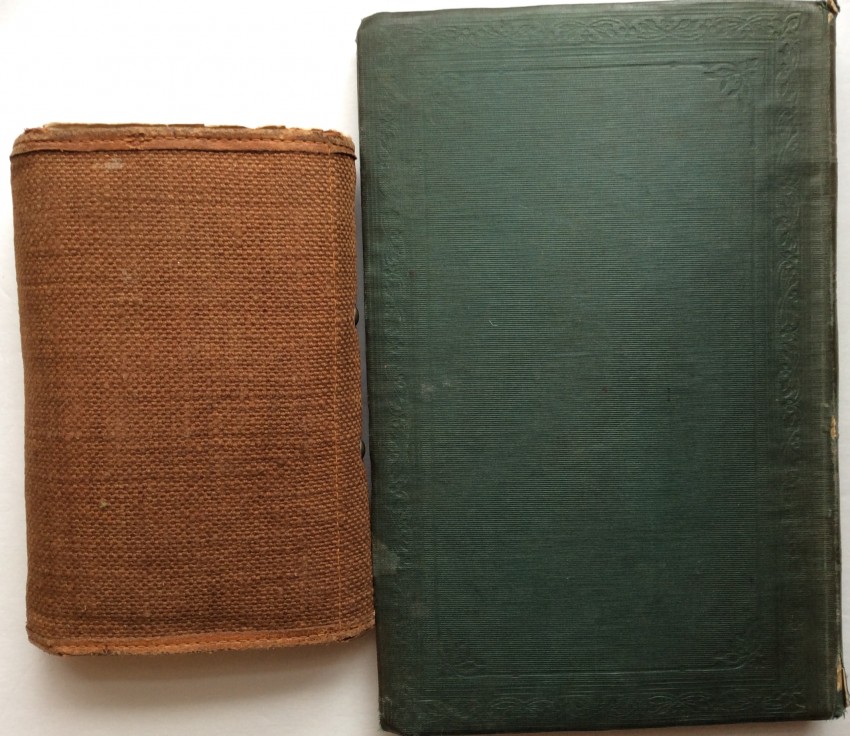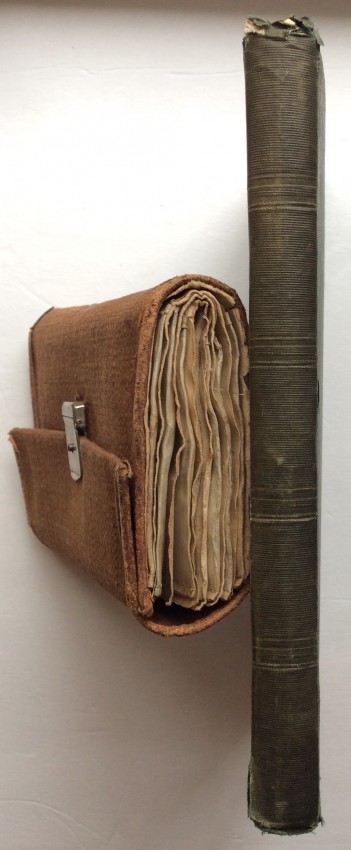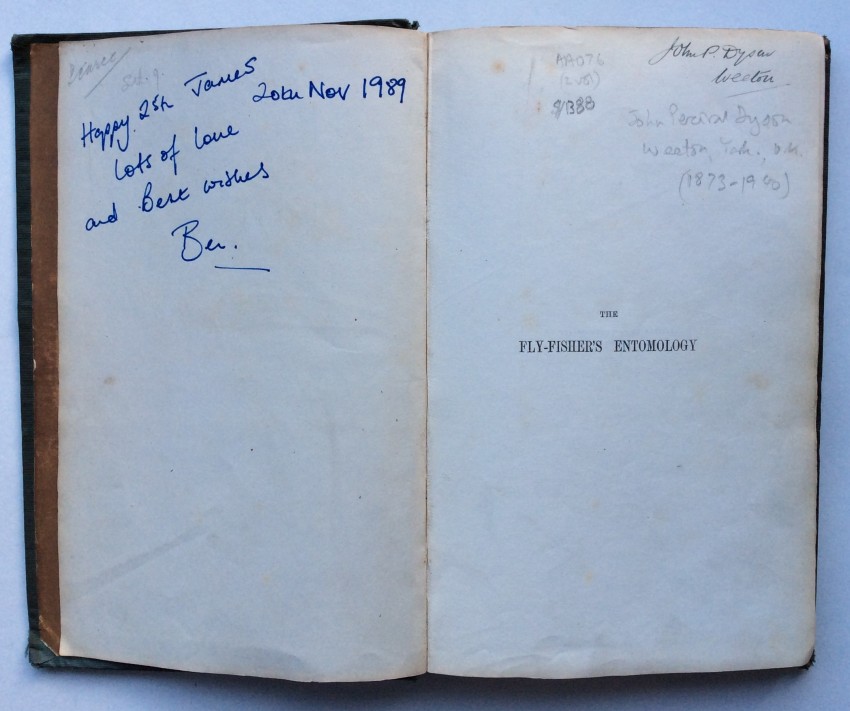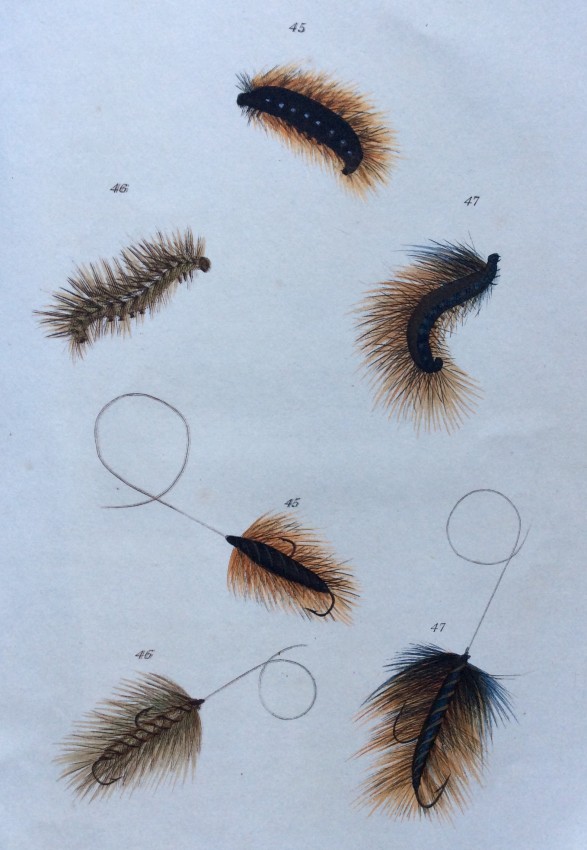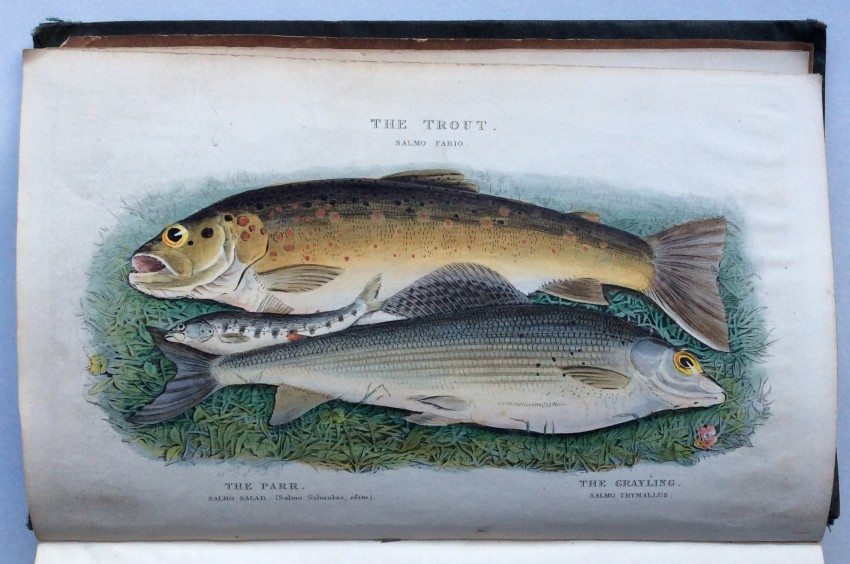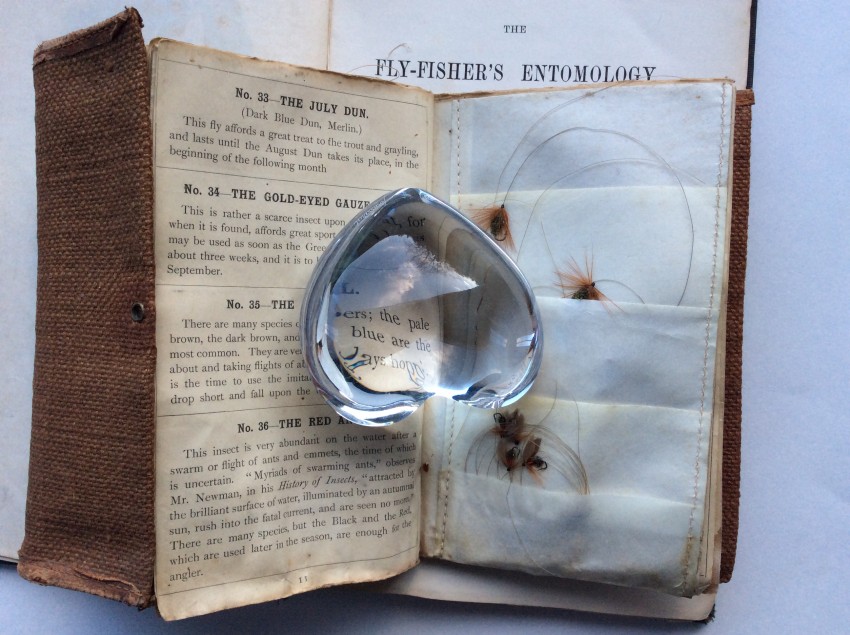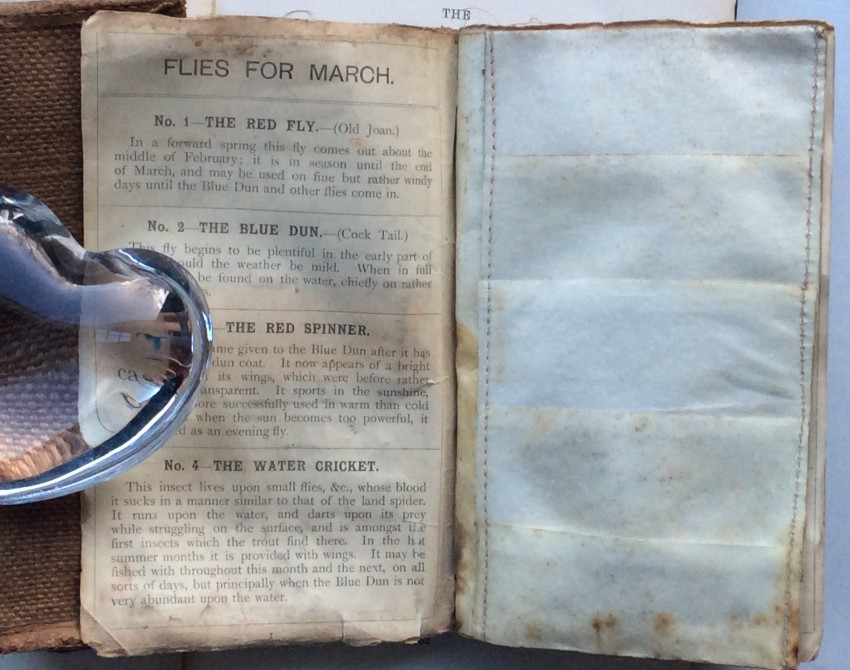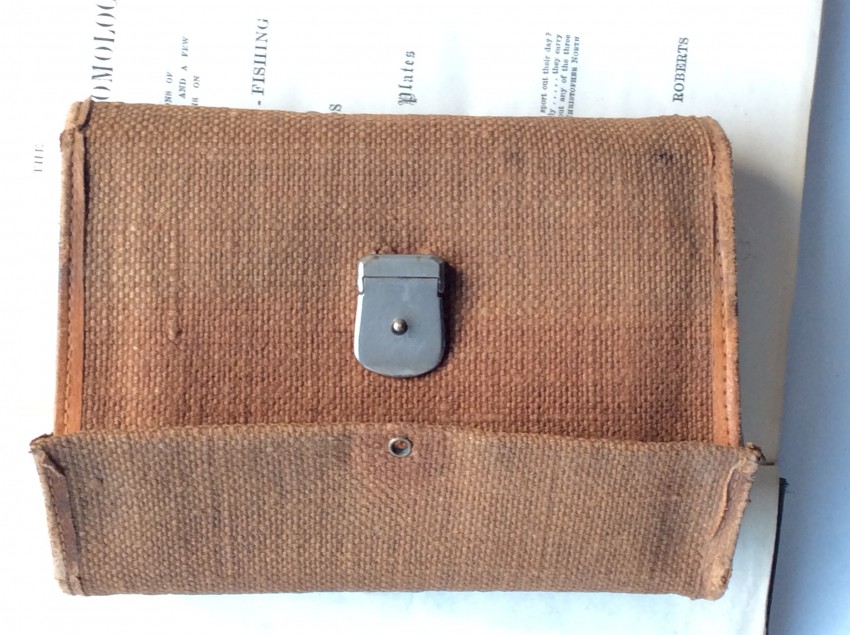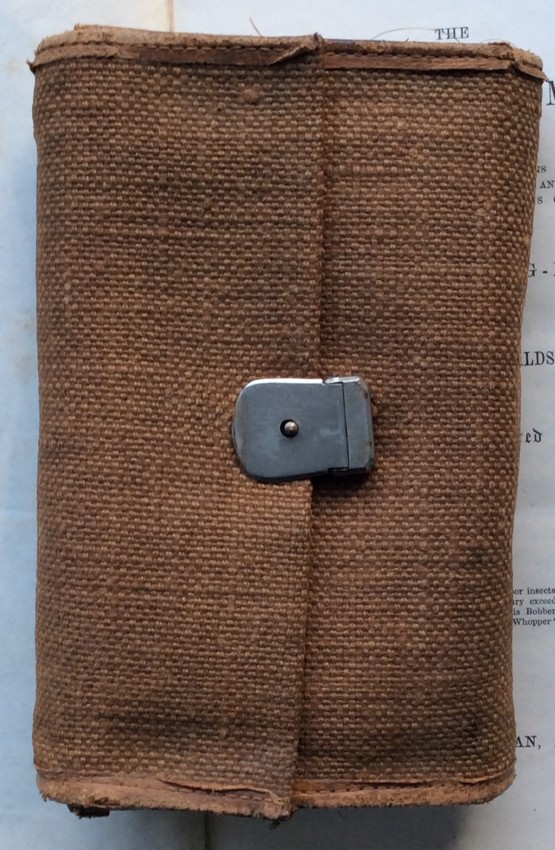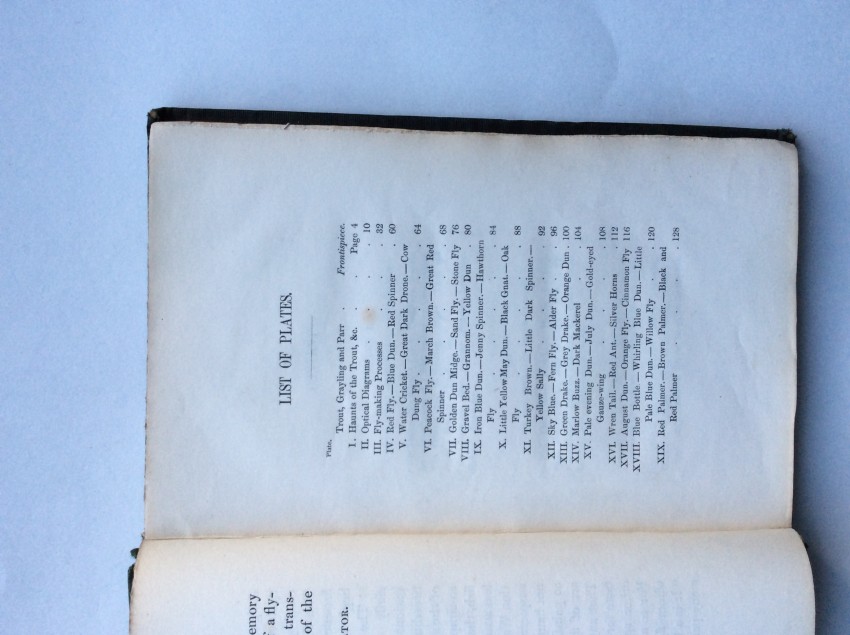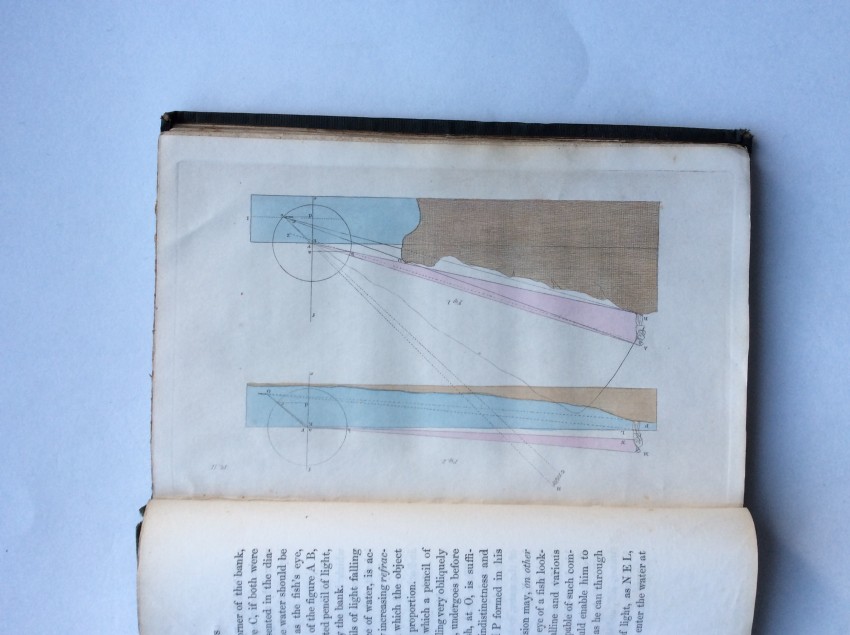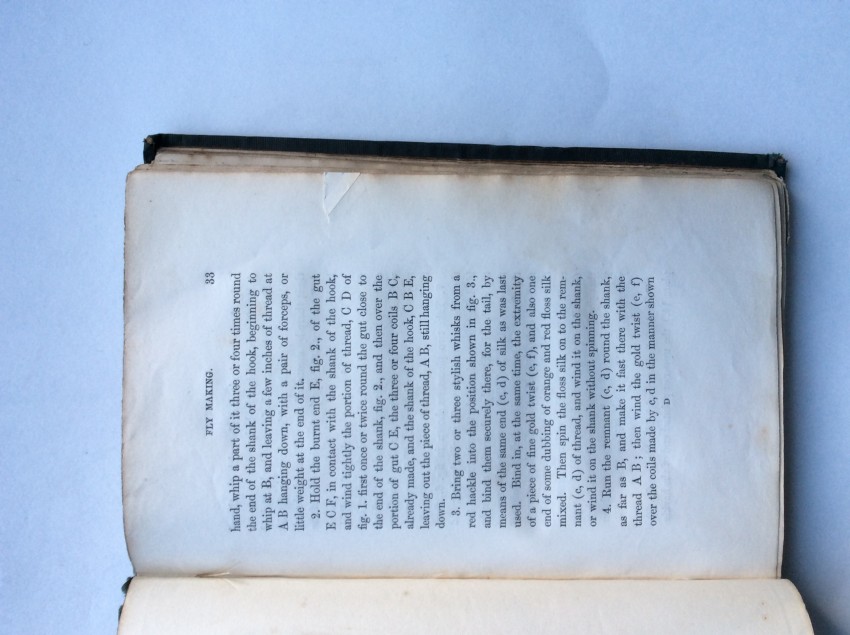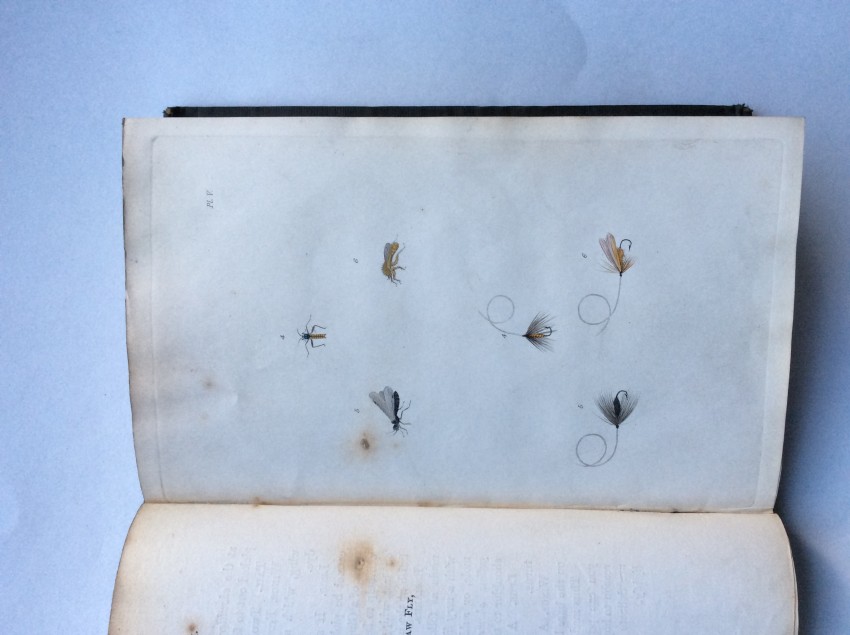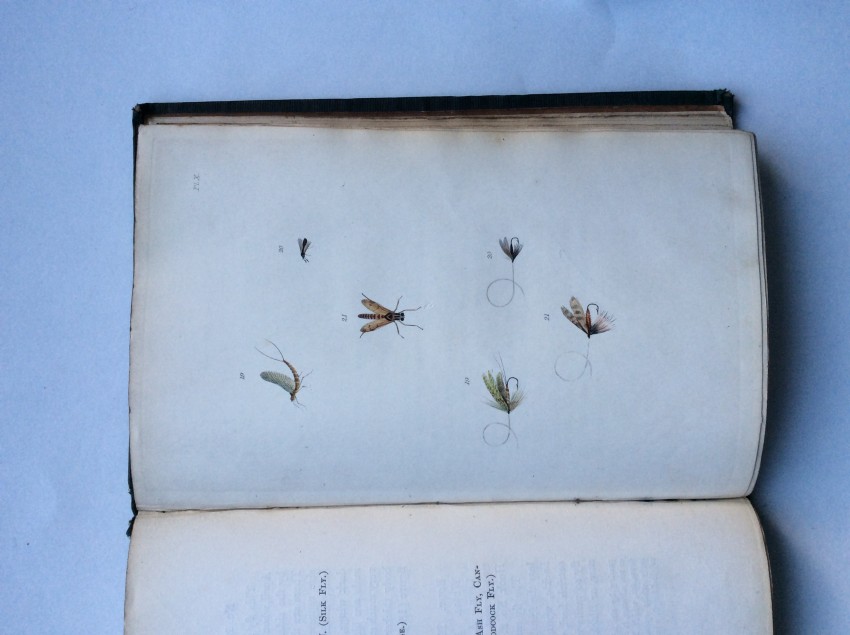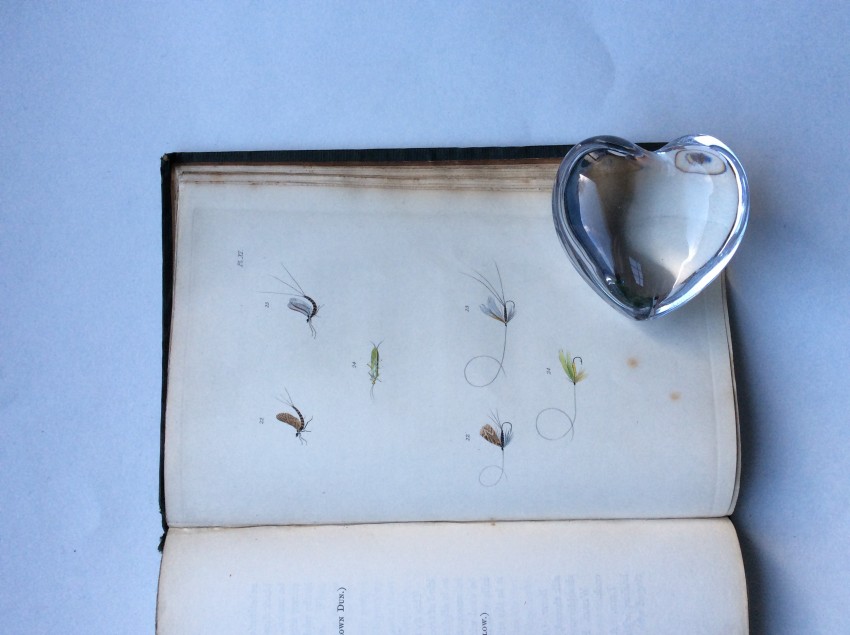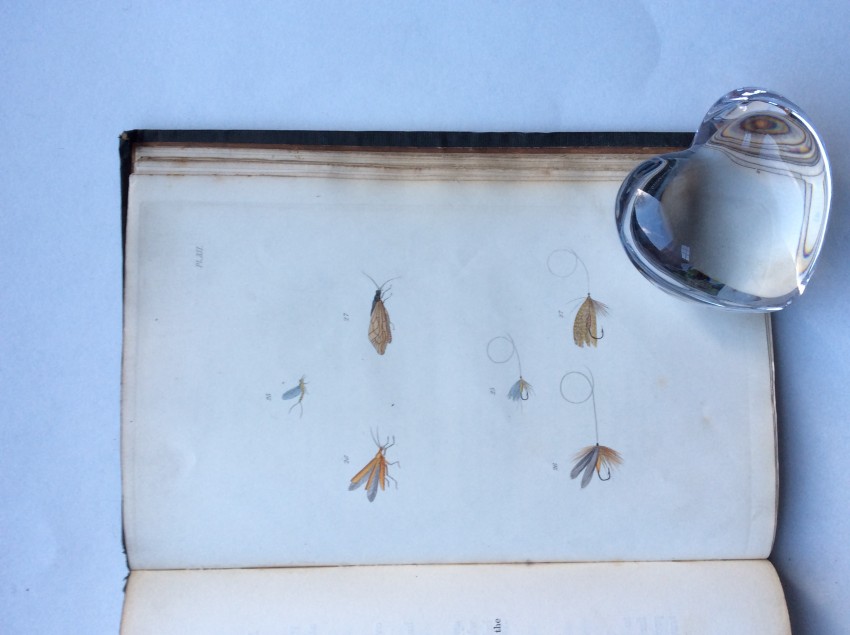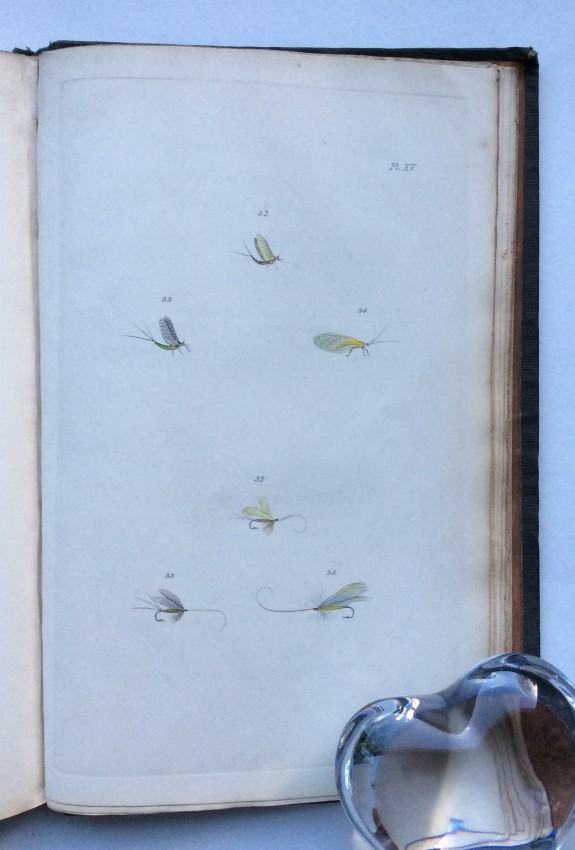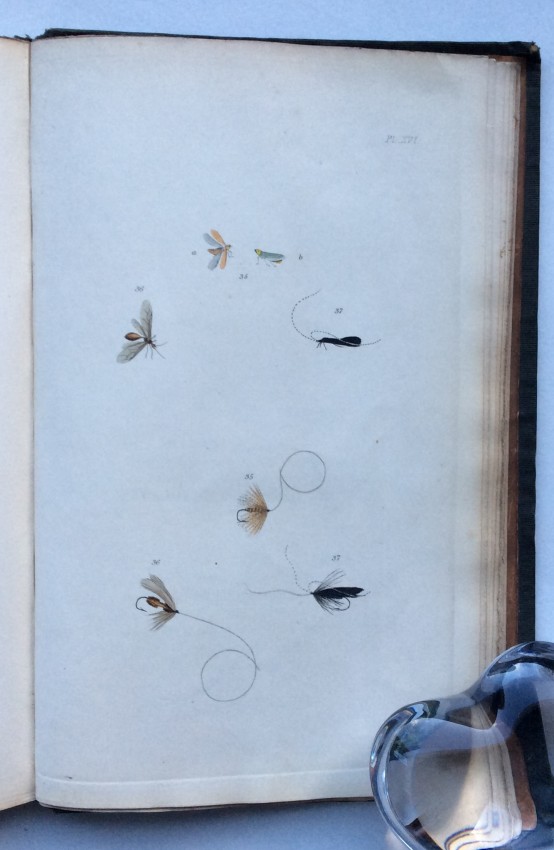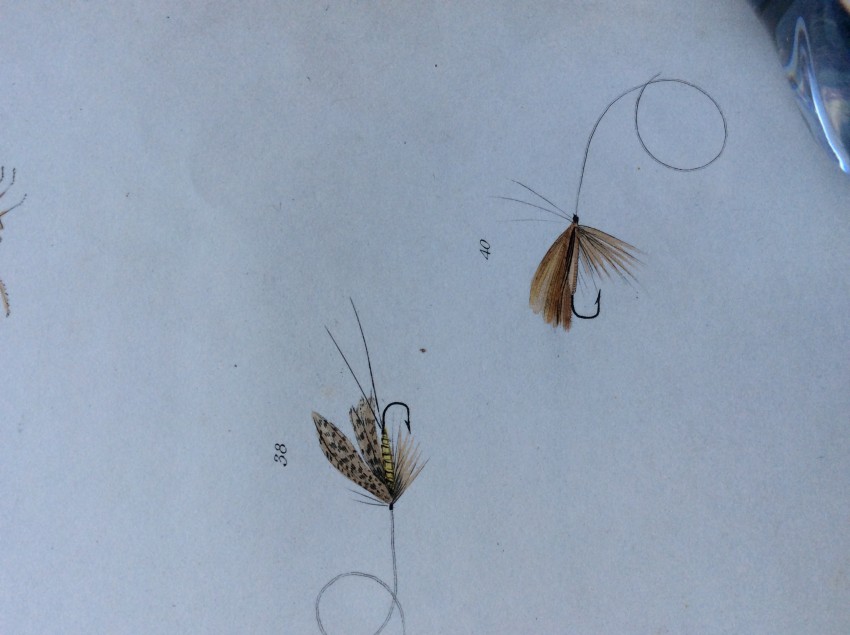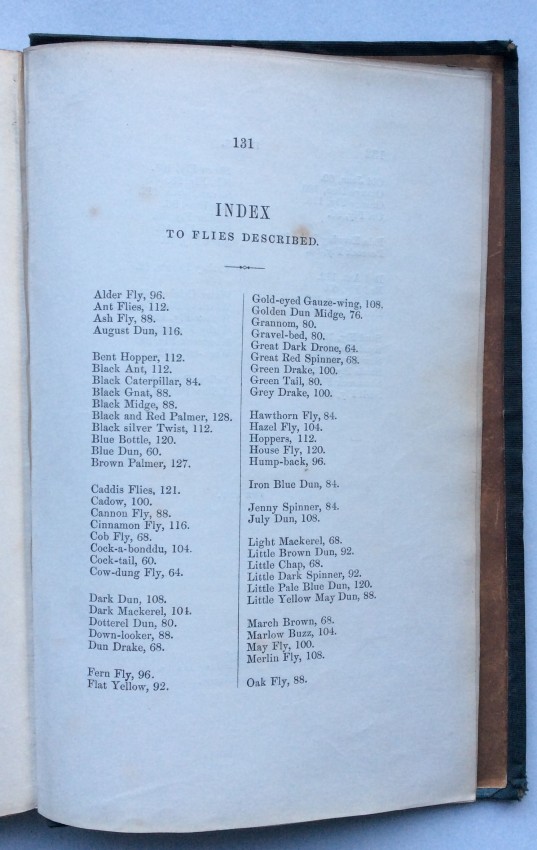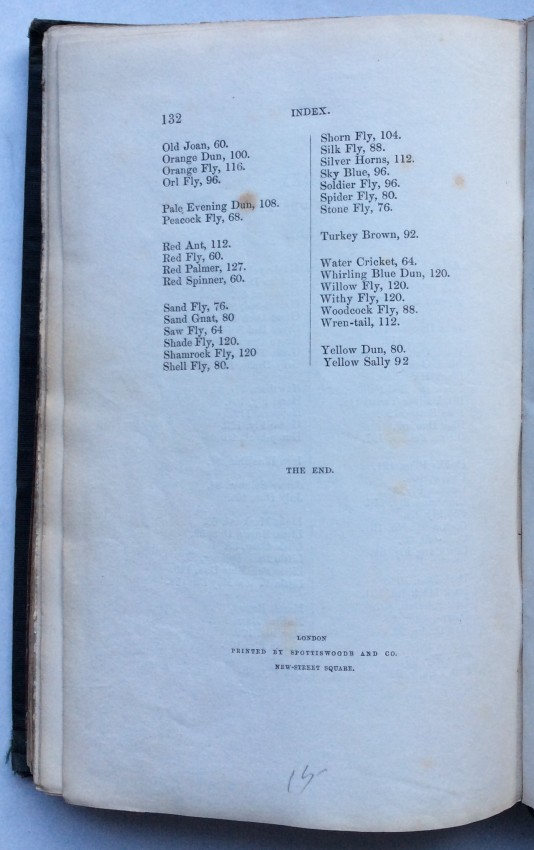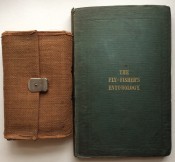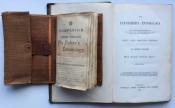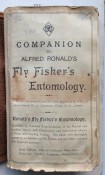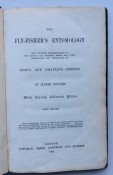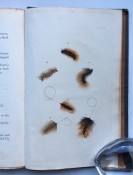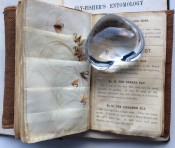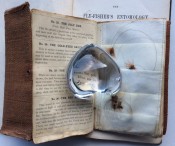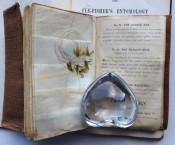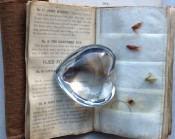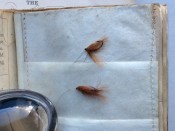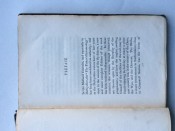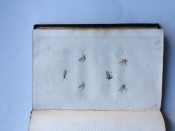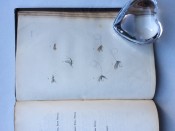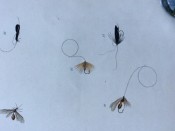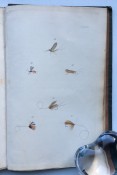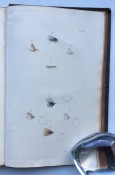Alfred RONALDS (1802-
The Fly-Fisher’s Entomology with coloured representations of the natural and artificial insect, and a few observations and instructions on Trout- and Grayling-fishing … sixth edition.
London: Longman, Green, Longman, & Roberts, 1862.
Octavo (8 ¾ x 5 5/8 inches). Pp. [i-]xvi; [1-]132. Half-title. 20 hand-coloured engraved plates. (Clean tear to outer blank margin of pp. 33/34 and 49/50, light edge toning throughout). Original blue-green cloth binding, covers with border blocked in blind, the upper cover lettered in gilt, spine blocked in blind, brown glazed endpapers (some discolourationto cloth , spine chipped at head and foot, corners bumped).
Provenance: John Percival Dyson (1873-1940, signature on half-title); recent ink inscription on front free endpaper).
Together with: Richard Wheatley (manufacturer).
Companion to Alfred Ronald’s [sic.] Fly Fisher's Entomology. The Extracts are printed from the Sixth Edition of the Work... [No place, but Birmingham?: no date but 1862 or later].
Small octavo (6 x 3 ¾ inches). Letterpress title and 14pp. text on 8 leaves, these leaves interleaved with six leaves made of vellum strips sewn together to form four pockets per page, the central gathering formed of two leaves of thin white felt, the pockets with a total of 32 actual examples of eyeless flies (possibly 19th century?), most with attached gut. Original wallet-style brown canvas, edged with pigskin, with white metal clasp, two internal pockets.
A good copy of the sixth edition of Ronald’s bestseller, with the matching ‘Companion’ in excellent condition, with a selection of actual flies.
The plates include a valuable series where the natural insects are placed immediately above their artificial counterparts. The plates are ordered chronologically according to when particular insects are most abundant: Mayflies in May, Red Ants in July, etc. The text includes details of the individual insect’s habits and habitat. This is followed by notes on what materials to use to create the artificial fly. The Wheatley ‘Companion’ conforms to the ‘Type 4’ listed in the online ‘Richard Wheatley Museum’: the flies are generally in good condition, but a trifle squashed. The shape of the hooks and the fact that they are eyeless suggest that they are early but we cannot not guarantee this.
The Fly-Fisher's Entomology, first published in 1836, "was the first comprehensive work related to the entomology associated with fly fishing. Although the work was Ronalds' only book, it was published in 11 editions between 1836 and 1913 and has been extensively reprinted in the last 100 years....
Alfred Ronalds was born in Highbury, London in 1802, the 11th of 12 children. His father was a successful merchant and his eldest brother, Sir Francis Ronalds, became famous for pioneering the electric telegraph. In 1817 at the age of 15, Ronalds took an apprenticeship as an engraver, lithographer and copper-plate printer. In 1830 he moved to Tixall, Staffordshire. He married his first wife, Margaret Bond, a local girl, in 1831. In Staffordshire, Ronalds took up the sport of fly fishing, learning the craft on the rivers Trent, Blythe and Dove. On the River Blythe, near what is today Creswell Green, Ronalds constructed a bankside fishing hut designed primarily as an observatory of trout behaviour in the river. From this hut, and elsewhere on his home rivers, Ronalds conducted experiments and formulated the ideas that eventually were published in The Fly-fisher's Entomology. He combined his knowledge of fly fishing with his skill as an engraver and printer, to lavish his work with 20 colour plates.In 1844, Ronalds moved his family to Dolgelly North Wales and in 1846 he moved to Brecon in South Wales, then to Cwmback, Llanalwedd, to become a full-time tackle maker and fly tier. In 1847, his first wife Margaret died during childbirth. In 1848 with six of his children, Ronalds moved to Melbourne, Australia and set up an engraving business. The gold rushes of the 1850 eventually found Ronalds settled in Ballarat, where he died suddenly of a stroke in 1860. He never returned to England" (wikipedia)
- Size: 223 x 143mm & smaller
- Sold By: Shadowrock Rare Books
- Contact Person: Adam Langlands
- Country: United States
- Email: [email protected]
- Telephone: 001-860-248-1547
- Preferred Payment Methods: Paypal, US$ checks and wire transfers, major credit cards through paypal
- Trade Associations: AA Approved


![The Fly-Fishers Entomology [+ the rare 'Companion', + 30 early examples of trout flies]](https://s3-eu-west-1.amazonaws.com/antiquarianauctions/main/1483371951FullSizeRender36.jpg)



